- “It was great while it lasted.”
- “Chances of getting a link were already very, very minimal. Not worth the effort, in my view at least.”
- “Likely too saturated, but could potentially work for some very specific niches like cyber security or something like that.”
These are the unfavorable opinions of SEO experts on HARO link building.
Indeed, HARO has been oversaturated for a few years now, and the rise of ChatGPT only made things worse.
TL;DR
- HARO has been a go-to platform for winning high DR placements for years.
- In 2024, HARO switched to a pay-to-pitch model and shut down by the end of the year. But in April 2025, Featured.com brought it back, keeping the original free email-based format.
- Success rates on HARO vary significantly by niche, with certain sectors like cybersecurity still showing promise.
- Despite its benefits, HARO requires much more effort than ever before to break through the noise.
- Journalists are generally wary of link builders on the platform.
- Overreliance on HARO for link building can result in Google penalties and negative impacts on SEO efforts.
- Editorial links offer a reliable, controllable, and measurable link-building strategy, albeit at a higher cost than HARO.
So What’s HARO Link Building?
HARO link building is the process of responding to journalist queries on HARO to earn backlinks. By providing expert insights, you can get featured in articles with a link to your website, boosting your SEO and online authority.
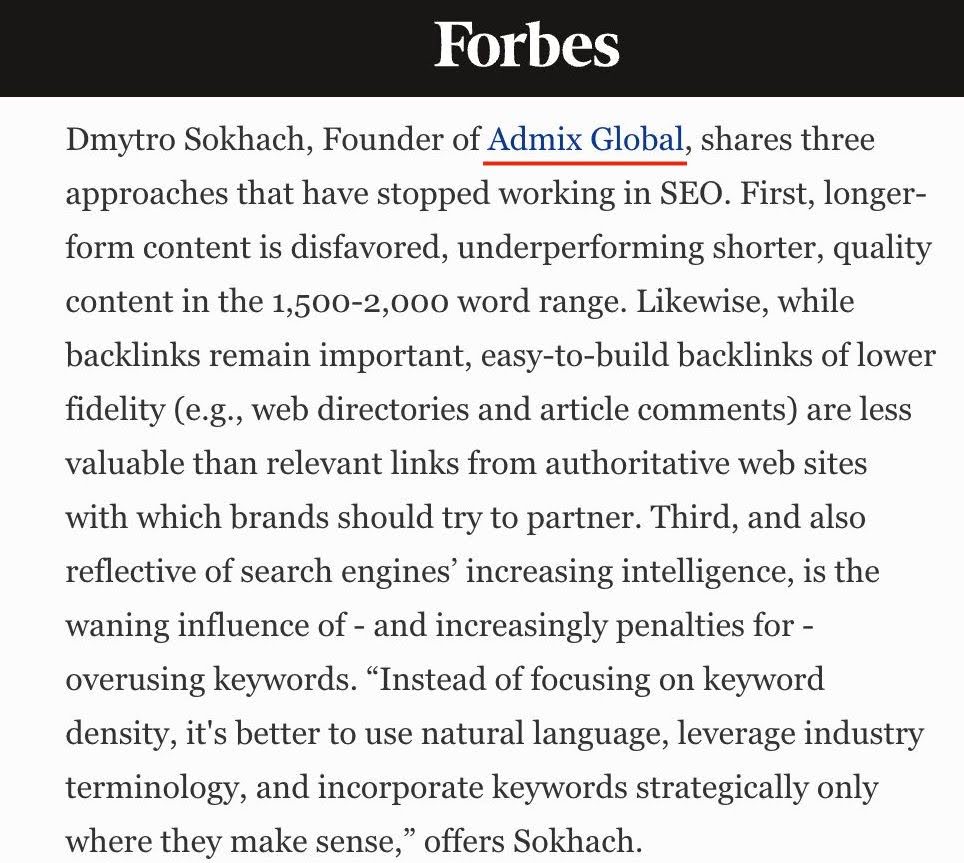
How to Use HARO for Link Building?
The original HARO is live again and back to its classic email-based system.
I get two emails a day with journalist requests.
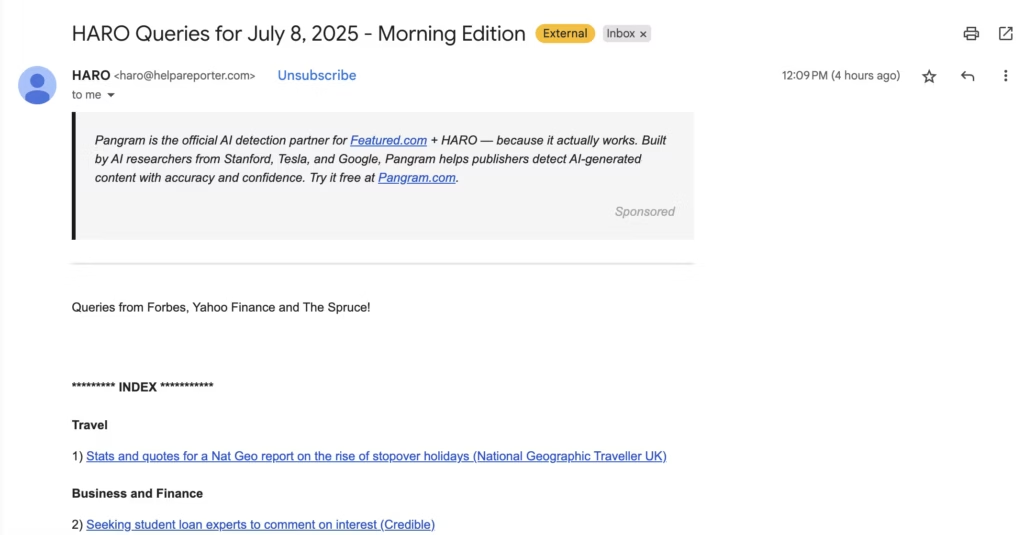
To use HARO for link building, create an account and select your industry to receive relevant journalist queries.
Alternatively, you can sign up on one of the platforms we’ve recommended as HARO alternatives.
Some HARO-like platforms still send daily emails with journalist requests, while others require you to log in and browse opportunities directly within their system. Check how each platform operates to stay on top of relevant queries.
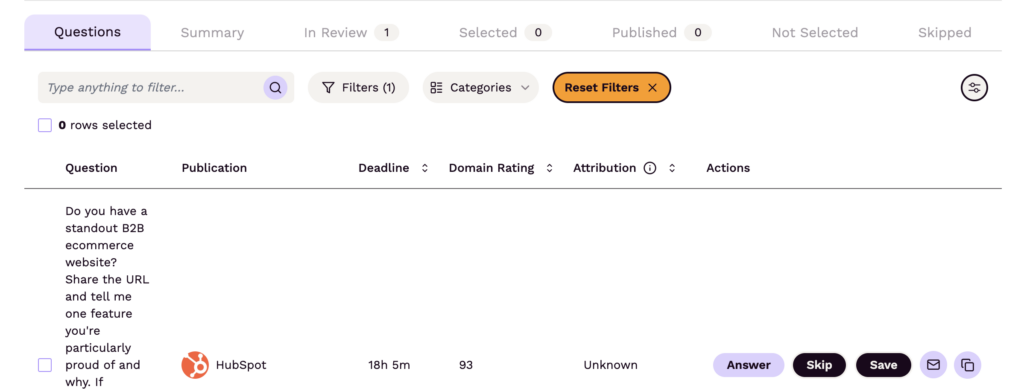
Write a clear, concise pitch that provides value and highlights your expertise. Since your profile already includes your website link, there’s no need to add it to your response directly.

If a journalist responds, provide any additional details quickly.

Once featured, check the publication to ensure your backlink is live. HARO is an effective way to earn premium backlinks and gain media exposure.
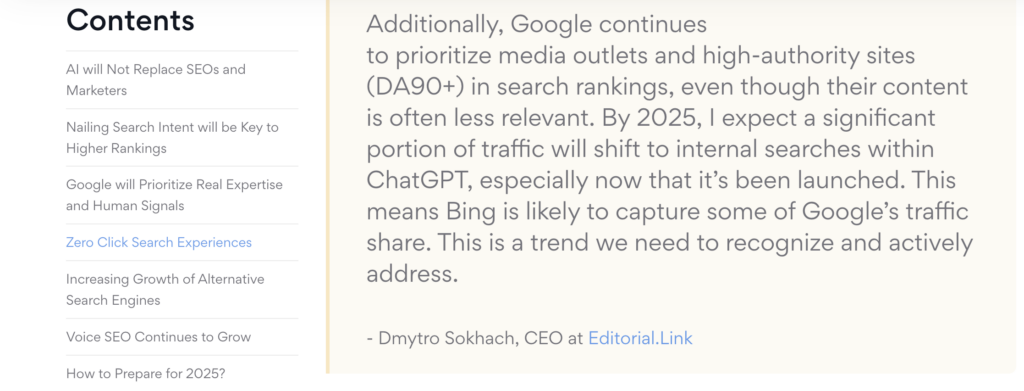
HARO Statistics from 2024
- Health, home, and finance were the most popular topics on HARO.
- GOBankingRates, SHEfinds, and Homes & Gardens were the most active media outlets.
- More than half of placements in 2023 were dofollow.
- Around 30% of articles took around a week to be published.
- 50% of all articles were published within two weeks.
- Pitching within the first 6 hours after the request is submitted results in a 20% higher conversion rate.
Statistics sharing by Oleksandr Tereshchenko in his linkedin.
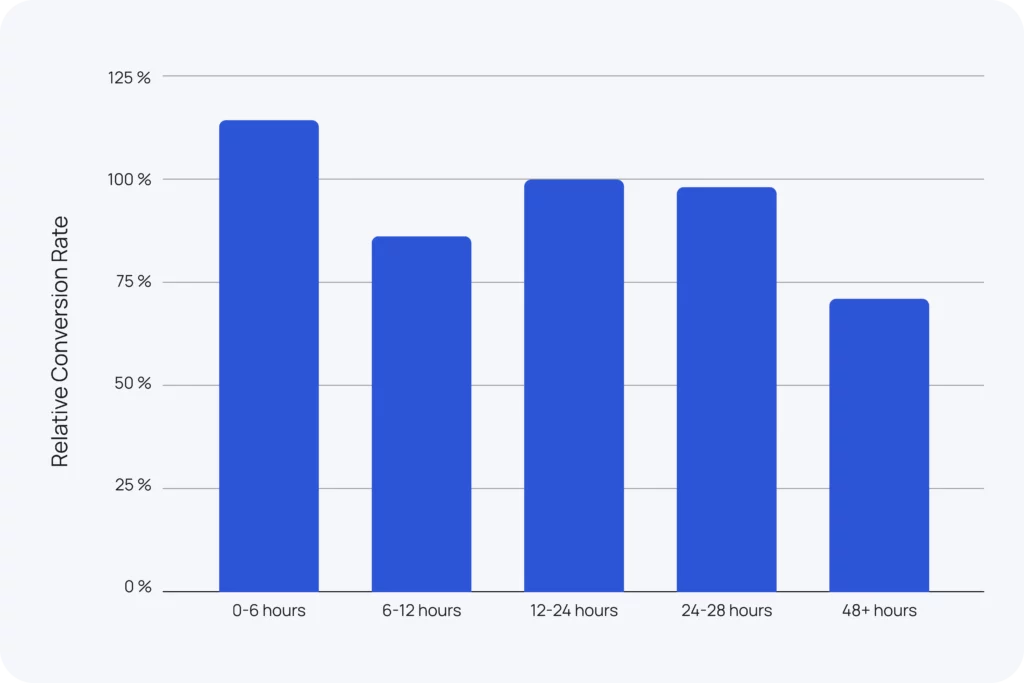
Speaking of conversion rates…
What is the success rate of HARO?
You can expect a 5–15% success rate on HARO. Your exact conversion rates depend on the topic, the quality of your answer, and, to a great extent, luck.
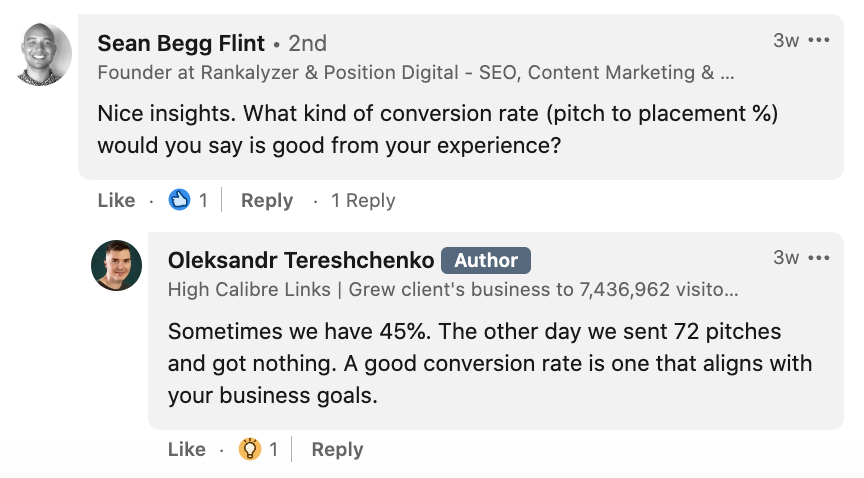
Is HARO Good for Link Building?
Undoubtedly, there is one significant benefit to using HARO for link building.
HARO lets you earn high-quality links for free (or almost for free since the rollout of the new pricing model).
No other method will bring you a link from a website like Forbes or HuffPost without you paying a hefty four-figure sum or being a regular contributor to the platform. HARO will.
Why HARO Link Building Isn’t an Easy Way to Build Backlinks
For now, it doesn’t look like the new platform and the pricing model are going to make HARO link building great again. Here’s why.
It’s harder than you think
If you think you could submit hundreds of AI-generated comments and secure dozens of high-quality placements, think again. Writers easily recognize AI-generated content, and when they do, they filter it out immediately.
If you’re planning to use ChatGPT or another AI tool to generate responses, please know it’s probably going to be a waste of time.
You already know these responses are generic and unhelpful. But what you may not realize is…
THEY ALL LOOK THE SAME! Seriously, in some cases, they’re almost completely identical.
[…] If you’d like to be featured as a subject matter expert, please share some actual expertise.
HARO, as the majority approaches it, is indeed a wasted technique. To succeed with HARO, you need to handpick the most relevant queries, invest your time in talking to the actual subject matter experts within the company, and craft original responses. But that’s not what most link builders want (or have time) to do when they engage in HARO link building.
It’s been discredited by fellow link builders
You’ve got to know — journalists aren’t the biggest fans of link builders, and for good reason. While they seek value and expertise on HARO, link builders seek, you know, links. So when the latter bombard journalists with countless pitches that contribute neither value nor expertise to their articles, it hurts the reputation of link builders as a whole.
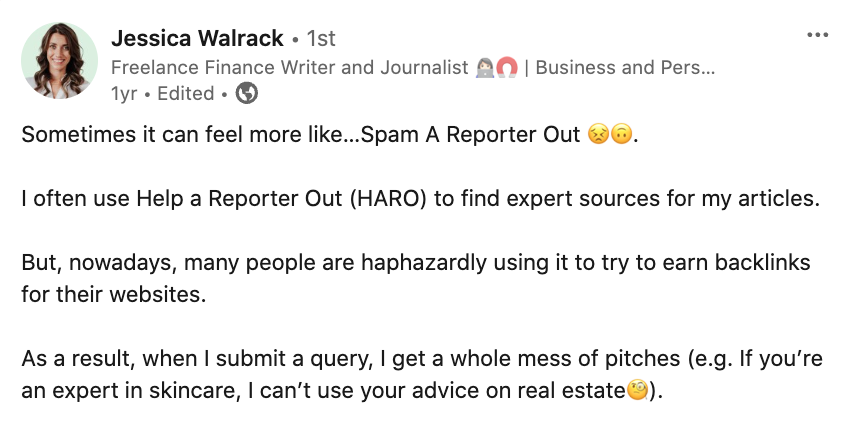
It gives you zero control over the results
First off, you can only build homepage links on HARO. Therefore, if you're aiming for specific pages and keywords (which you should be), HARO link building won’t cut it.
Furthermore, you have no control over the destiny of your submission. Will it truly be featured on Forbes, or has the author used Forbes as a facade for their low DA site? Will it get published at all?
When building links with HARO, you can’t set clear goals or outline a strategy due to numerous factors beyond your control.
It can actually be bad for your site
Google works hard to detect unnatural links and penalize websites that use them. Recently, site owners have been seeing an unsettling trend — it looks like Google hits sites that rely heavily on HARO link building.

“Umm, how does Google detect HARO links?”
If you're not selective about the topics you engage with, it becomes relatively straightforward. Too many link builders respond to queries that aren’t even remotely relevant to the site they’re linking to.
For instance, if you build links for a fitness app, having your product manager contribute to the article on app development doesn’t make this link relevant to your niche. If you accumulate a lot of links like this, Google will notice that you're getting too many placements from sites unrelated to your topic and raise red flags.
It’s not scalable
We’ve just figured out that if you want to do HARO the right way, you should only respond to queries in your company’s niche. Where does this leave us? Right, we’re left with a handful of relevant queries per month and, considering conversion rates, none to only one link.
Definitely not the fastest way to ramp up your link profile…
All things considered, while HARO may drive some positive results, it’s not sufficient as a standalone link-building strategy.
What are the options?
Editorial links
Editorial links are placements that you naturally earn from large publications. If you're not comfortable with the uncertainty of the aforementioned methods, editorial link building is the right fit for you.
You don’t need to monitor requests and spend time crafting unique pitches. All you need to do is partner with a reliable link building agency that will earn editorial links for you. With a cost per link starting as low as $350, you can have your backlinks placed on sites like learn.g2.com, monday.com, toggl.com, etc.
We at Editorial.Link help our clients gain high-authority, relevant links that meet their requirements. Tell us about your project, and we’ll provide you with a sample of links that would strengthen your link profile and help you reach your goals.
Summary
HARO link building is a great addition to your link-building strategy. But you need a solid foundation for your link-building efforts — and this is where editorial links shine. With editorial links, you can:
- build links to pages other than the homepage;
- have control over your link placements and anchor text;
- build a measurable strategy;
- always get links from relevant sources;
- save the time you’d have otherwise spent pitching on HARO.



